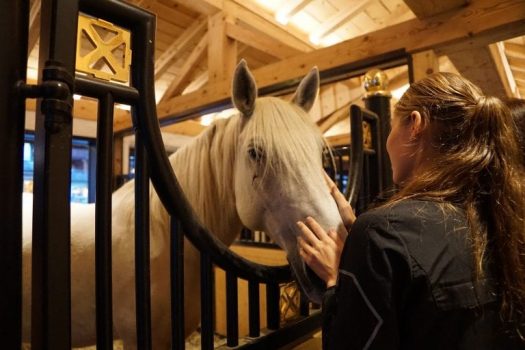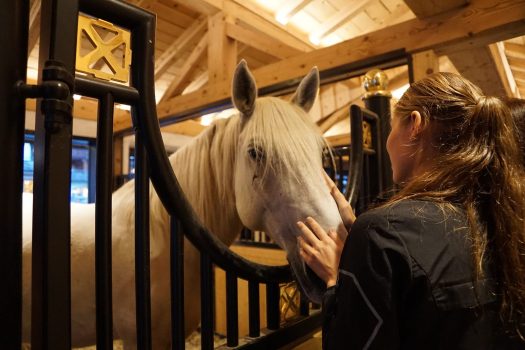By David Lee Sexton, Jr.

Pixabay[Horse by strecosa on September 30, 207, CC0]
Equine-assisted activities and therapy (EEA/T) refers to the collaboration between licensed therapists, professional horse handlers, and horses themselves to assist clients in their treatment (Trask, 2010). Trask (2010) suggests that the mere presence of the animal itself can be therapeutic, and the possibility of forming bond a bond with the horse can allow the client to process their feelings more effectively.
In a series of studies, Gehrke (2010) describes the use of heart rate monitors in examining interactions between horses and people. The researchers first examined the animals’ heart rate variability (HRV) and found that it was similar to that of humans; thus, both human and horse HRV could be measure utilizing the same instrument. In addition, it is important to note that HRV is strongly associated with changes in emotional stress (Gehrke, 2010). Fascinatingly, HRV measures taken from interacting humans and horses revealed that, regardless of whether or not the horse was familiar with the individual, the HRV of the horse matched the HRV of the human. In other words, the level of the horse’s stress was dependent on human’s level of stress. While this does not confirm that horses mirror the emotions of humans, it does provide evidence that a relationship does exist that may be useful in therapeutic situations.
Areas of Benefit
Earls, Vernon, and Yetz (2015) indicate that EAA/T is currently being used in the treatment of a variety of different psychological disorders; however, more research is needed to support the usefulness of this intervention. As such, Earls, Vernon, and Yetz sought to examine the effectiveness of EAA/T in treating symptoms of anxiety and post-traumatic stress disorder (PTSD). Remarkably, they found that after participation in an EAA/T program, participants reported decreases in a variety of symptoms, including: PTSD symptoms, emotional distress, anxiety, depression, and even alcohol use.
In addition, Jang et al. (2015) found that the use of EAA/T had positive outcomes when used for the treatment of attention-deficit/hyperactivity disorder (ADHD) as well. Results indicated that following a 12-week EAA/T program, consisting of both unmounted and mounted activities, participants’ ADHD-rating scale (ARS-I) total scores, which indicate the severity of ADHD symptoms, and impulsivity and hyperactivity subscale scores decreased significantly.
Additional Resources
EAA/T continues to gain attention within the research community, and new avenues are being explored to evaluate the usefulness of this therapeutic technique to treat various psychological disorders. If you would like to learn more about EAA/T and other animal-assisted therapy techniques, please access the following resources provided by the OneOp (MFLN) Family Development (FD) team:
References
Earles, J. L., Vernon, L. L., & Yetz, J. P. (2015). Equine-assisted therapy for anxiety and posttraumatic stress symptoms. Journal of Traumatic Stress, 28(2), 149-152. doi: 10.1002/jts.21990
Gehrke, E. K. (2010, Spring). The horse-human heart connection: Results of studies using heart rate variability. NARHA’s Strides, Retrieved from http://isar.dk/wp-content/uploads/2012/02/Dr_Kaye_Article.pdf
Jang, B., Song, J., Kim, J., Kim, S., Lee, J., Shin, H. Y., . . . Joung, Y. S. (2015). Equine-assisted activities and therapy for treating children with attention deficit/hyperactivity disorder. Journal of Alternative and Complementary Medicine, 21(9), 546-553. doi: 10.1089/acm.2015.0067
Trask, L. (2010, October). Helping with horses: Equine assisted psychotherapy (EAP): Can a horse assist in psychotherapy? Psychology Today, Retrieved from https://www.psychologytoday.com/blog/wild-thoughts/201010/helping-horses-equine-assisted-psychotherapy-eap
This post was written by David Lee Sexton, Jr. of the OneOp Family Development Team. The Family Development team aims to support the development of professionals working with military families. Find out more about OneOp Family Development team on our website, Facebook, and Twitter.













